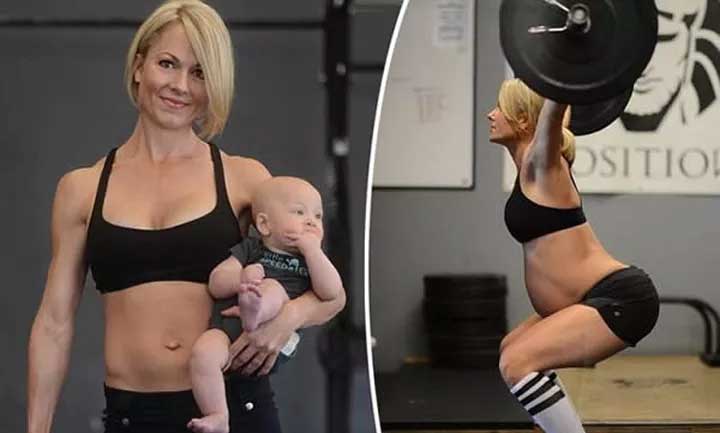I have had many challenges while working with the general population ranging from novice clients, to helping with injury rehab and finding different variations of exercises to ensure that clients of different ability can still train toward their own personal goals without injuring themselves. Training a pregnant woman was an entirely different challenge altogether, but one I’ve thoroughly enjoyed!
There are many factors that can affect the planning and execution of training when you’re pregnant. Making sure you identify these factors then plan around them is of the utmost importance as the differences depend on the individuals themselves.
Speaking with your health professional/ General Practitioner – You need to be able to trust your support team. Your GP and Obstetrician will know what is best for you surrounding everything from the way you sleep to the food you eat and to the amount of training you can do. Most health professionals will recommend training based on what you’ve been doing and what you’re used to. For example my partner (Ariana) was used to heavy lifting and medium to high intensity training so we kept up with this and monitored how she was feeling every session. At 27 weeks she was still deadlifting 100kgs, back squatting over 60kgs and she was able to press weight overhead.

Listening To Your Body
As simple as it sounds this statement couldn’t be more accurate. You should remember, especially first time mothers, no one knows what you’re feeling and the way you feel may be different to the way other mothers have felt during training. I had some women tell me they couldn’t squat down without feeling like they were going to give birth yet Ariana can still perform weighted squats now at 39 weeks so it’s not exactly necessary to go off what others could or couldn’t do. Test what you can do safely then if you’re able to you can add weight slowly.
As the weeks progressed the amount Ariana was lifting decreased due to core instability and uncomfortable movements. We altered trainings every week but kept her active daily. Keeping active doesn’t always mean lifting weights. For some women swimming is comfortable and some can continue running but keep in mind you don’t want to overheat the body too much as it becomes an uncomfortable atmosphere for baby.
Training Intensity
How do you know if you’re training too hard? – This is a hard one especially if you’re someone who is very fit and used to the high intensity. This is when listening to your body becomes extremely important. There are other things you can implement into your training as well to check that you’re not overdoing it and putting baby in harm’s way.
Heart rate: now this will once again vary from person to person but is a good way to track your training intensity. First you’ll need to work out your Max Heart rate. A very general estimate is using 220-your age (eg. 220- 25= 195MHR). You then need to work out 75%-85% of your MHR (eg: 75%-85% of 195=146-165). For most people this is a medium to high intensity training zone (the percentage system) and therefore varies from person to person. This is one way to monitor your heart rate and make sure you are in a reasonable training zone but aren’t over doing it. Working within these percentages has also been proven to have an effective training stimulus in order to produce a better performance/ result each time you train.
Core Training
Core training becomes very important throughout pregnancy as there are a few underlying factors which start to affect the individuals core strength. These include the loosening and stretching of ligaments, stretching of muscle around the core area, fatigue and also adding extra core to a session which is time consuming in itself.
Regardless, it needs to be done. These can be easily incorporated into daily activities you just need to know how to activate your core effectively. Learning to do so pre pregnancy or during the first trimester when these factors don’t play such a large part is your best bet going forward. For me and my pregnant clientele I added a lot of basic core exercises performed in a prone position. This was done as further down the track, mainly the second trimester onward, lying on your back as a pregnant woman is uncomfortable. The biggest focus of core training was learning to activate the inner core (transversus abdominus). This is the part of the core that sits below the abs. It is very important due to its support that it provides throughout the whole trunk of the body, the back and the front. Isometric Transverse Abdominus exercises would be the best to master and can be done in most settings even just basic daily activities you do around the house like vacuuming or gardening.

In conclusion, start by speaking with your health professional about what’s best for you as every individual will have different needs and abilities. Listen to your body regardless of what others tell you and always ask questions. If trainers or health professionals aren’t going to give you time or help you to understand something get a new professional that will. Your intuition and the things you feel while you’re pregnant are usually right so don’t be afraid to check with someone. Training intensity is important as it can be an indicator for baby and making sure they’re comfortable and not overheating. However, this will be a little bit of trial an error as you can still train quite hard without harming baby pay attention to heart rate and the way you feel. During the 1st trimester, most women are still able to do a lot of the same training from running to core lying on their back to high intensity training. However, this is a good time to start implementing new ways to train and different exercises you can carry through during the later stages of pregnancy where you will become restricted due to the changing body shape and difference in strength.
